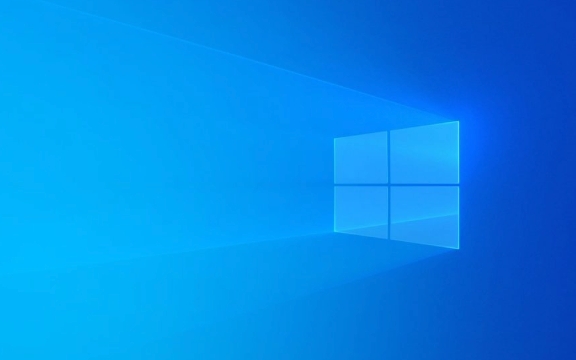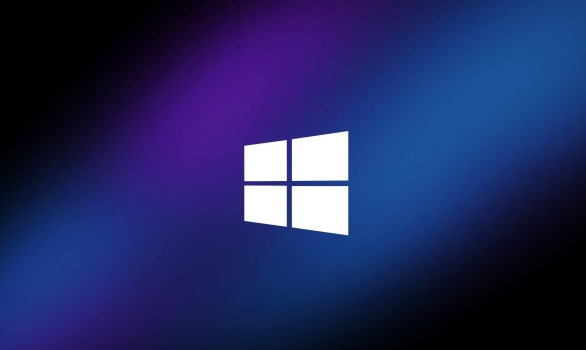Hyper-V can be installed on Windows 10/11 Pro, Enterprise, or Education editions by enabling it through Windows Features or PowerShell, provided your system meets the requirements. 1) Verify your Windows edition using winver and ensure it’s a supported version. 2) Confirm hardware support: 64-bit CPU with SLAT, at least 4GB RAM, and BIOS-level virtualization (Intel VT-x or AMD-V) enabled. 3) Enable Hyper-V via Control Panel’s Windows Features or run in PowerShell as Administrator: Enable-WindowsOptionalFeature -Online -FeatureName Microsoft-Hyper-V -All. 4) Restart the computer after installation completes. 5) Enter BIOS/UEFI if virtualization is disabled, enable the setting, and save changes. 6) Confirm virtualization is active via Task Manager’s Performance tab. 7) Launch Hyper-V Manager from the Start menu to begin creating and managing virtual machines. Note that Hyper-V is unavailable on Windows Home; use alternatives like VirtualBox in such cases, and ensure Core Isolation Memory Integrity does not interfere with Hyper-V operation.

Installing Hyper-V on Windows is straightforward if your system meets the requirements. Hyper-V is Microsoft’s native virtualization tool, available on Pro, Enterprise, and Education editions of Windows 10 and Windows 11 (and on Windows Server). Here’s how to enable and install it.

? Check System Requirements
Before installing, ensure your PC supports Hyper-V:
- Windows edition: Windows 10/11 Pro, Enterprise, or Education (not available on Home edition)
- 64-bit processor with SLAT (Second Level Address Translation)
- At least 4GB RAM (more recommended for running VMs)
- BIOS-level hardware virtualization enabled (Intel VT-x or AMD-V)
? To check your Windows edition, press
Win R, typewinver, and hit Enter.
? Enable Hyper-V via Windows Features
- Press
Windows key R, typeoptionalfeatures, and press Enter. - In the Windows Features window, scroll down and check the box for:
- Hyper-V (this includes Hyper-V Platform, Services, and Management Tools)
- Click OK.
- Wait while Windows installs the components — this may take a few minutes.
- Restart your computer when prompted.
After reboot, Hyper-V Manager and Hyper-V PowerShell cmdlets will be available.
?? Alternative: Use PowerShell (Faster Method)
Run PowerShell as Administrator and type:

Enable-WindowsOptionalFeature -Online -FeatureName Microsoft-Hyper-V -All
Press Enter. The command will enable Hyper-V and its components.
Once complete, restart your PC:
Restart-Computer
?? Enable Virtualization in BIOS (If Needed)
Sometimes, even if your CPU supports it, hardware virtualization is disabled by default in BIOS:
- Restart your computer and enter BIOS/UEFI (usually by pressing F2, F10, Del, or Esc during boot).
- Look for settings like:
- Virtualization Technology
- Intel VT-x / AMD-V
- SVM Mode (on AMD systems)
- Enable the option (may be under "Advanced" or "Security" tab).
- Save and exit.
After booting, verify it’s enabled by checking Task Manager:
- Open Task Manager → Performance tab → CPU
- Look for "Virtualization: Enabled" at the bottom.
?? Launch Hyper-V
After installation:
- Press
Win, type Hyper-V Manager, and open it. - You can now create virtual machines, set up virtual switches, and manage VMs.
? Notes and Troubleshooting
- Windows Home users: Hyper-V isn’t available. Use alternatives like VirtualBox or VMware Workstation Player.
- If you get an error like “Hyper-V cannot be installed: The hypervisor is already running”, it may mean another hypervisor (like WSL2 or VMware) is active. This is usually not a problem — WSL2 actually relies on Hyper-V.
- Make sure Core Isolation (Memory Integrity) in Windows Security isn’t conflicting — sometimes disabling it helps (though not recommended for security).
Basically, just enable it in Windows Features or PowerShell, restart, and you’re good to go — if your system supports it.
The above is the detailed content of How to install Hyper-V on Windows. For more information, please follow other related articles on the PHP Chinese website!

Hot AI Tools

Undress AI Tool
Undress images for free

Undresser.AI Undress
AI-powered app for creating realistic nude photos

AI Clothes Remover
Online AI tool for removing clothes from photos.

Clothoff.io
AI clothes remover

Video Face Swap
Swap faces in any video effortlessly with our completely free AI face swap tool!

Hot Article

Hot Tools

Notepad++7.3.1
Easy-to-use and free code editor

SublimeText3 Chinese version
Chinese version, very easy to use

Zend Studio 13.0.1
Powerful PHP integrated development environment

Dreamweaver CS6
Visual web development tools

SublimeText3 Mac version
God-level code editing software (SublimeText3)

Hot Topics
 How to change the system display language for all users in Windows
Jul 31, 2025 am 08:18 AM
How to change the system display language for all users in Windows
Jul 31, 2025 am 08:18 AM
InstallthedesiredlanguagepackviaSettings→Time&Language→Language®ion,ensuring"SetasmyWindowsdisplaylanguage"isselected.2.Changethesystemdisplaylanguageinthesamemenuandrestart.3.OpenControlPanel→Region→Administrativetab,click"
 How to reset the Microsoft Store in Windows
Jul 31, 2025 am 08:23 AM
How to reset the Microsoft Store in Windows
Jul 31, 2025 am 08:23 AM
ResettheMicrosoftStoreviaSettingsbygoingtoApps>Installedapps,selectingMicrosoftStore,clickingAdvancedoptions,thenRepairandResetifneeded.2.Ifthatfails,re-registertheStoreusingPowerShellasadminwiththecommand:Get-AppXPackage-NameMicrosoft.WindowsStor
 How to install Windows on a Mac without Boot Camp
Jul 31, 2025 am 11:58 AM
How to install Windows on a Mac without Boot Camp
Jul 31, 2025 am 11:58 AM
Without BootCamp, installing Windows on Mac is feasible and works for different chips and needs. 1. First check compatibility: The M1/M2 chip Mac cannot use BootCamp, it is recommended to use virtualization tools; the Intel chip Mac can manually create a boot USB disk and install it in partition. 2. Recommended to use virtual machines (VMs) for M1 and above chip users: Windows ISO files, virtualization software (such as ParallelsDesktop or UTM), at least 64GB of free space, and reasonably allocate resources. 3. IntelMac users can manually install it by booting the USB drive: USB drive, WindowsISO, DiskU is required
 How to reset the TCP/IP stack in Windows
Aug 02, 2025 pm 01:25 PM
How to reset the TCP/IP stack in Windows
Aug 02, 2025 pm 01:25 PM
ToresolvenetworkconnectivityissuesinWindows,resettheTCP/IPstackbyfirstopeningCommandPromptasAdministrator,thenrunningthecommandnetshintipreset,andfinallyrestartingyourcomputertoapplychanges;ifissuespersist,optionallyrunnetshwinsockresetandrebootagain
 How to install Windows on a Mac
Jul 31, 2025 am 10:07 AM
How to install Windows on a Mac
Jul 31, 2025 am 10:07 AM
ForIntel-basedMacs,useBootCampAssistanttocreateadual-bootsystemwithWindowsbypreparingaUSBdrive,downloadingaWindowsISO,partitioningthedisk,andinstallingWindowsalongsidemacOSwithsupportdrivers.2.ForAppleSiliconMacs(M1/M2/M3),usevirtualizationsoftwareli
 Step-by-step guide to installing Windows from an ISO file
Aug 01, 2025 am 01:10 AM
Step-by-step guide to installing Windows from an ISO file
Aug 01, 2025 am 01:10 AM
DownloadtheWindowsISOfromMicrosoft’sofficialsite.2.CreateabootableUSBusingMediaCreationToolorRufuswithaUSBdriveofatleast8GB.3.BootfromtheUSBbyaccessingthebootmenuoradjustingBIOS/UEFIsettings.4.InstallWindowsbyselectingcustominstallation,choosingtheco
 How to manage AppLocker policies in Windows
Aug 02, 2025 am 12:13 AM
How to manage AppLocker policies in Windows
Aug 02, 2025 am 12:13 AM
EnableAppLockerviaGroupPolicybyopeninggpedit.msc,navigatingtoApplicationControlPolicies,creatingdefaultrules,andconfiguringruletypes;2.Createcustomrulesusingpublisher,path,orhashconditions,preferringpublisherrulesforsecurityandflexibility;3.Testrules
 A guide to custom Windows installation options
Aug 01, 2025 am 04:48 AM
A guide to custom Windows installation options
Aug 01, 2025 am 04:48 AM
Choose"Custom:InstallWindowsonly(advanced)"forfullcontrol,asitallowsacleaninstallthatremovesoldissuesandoptimizesperformance.2.Duringsetup,managepartitionsbydeletingoldones(afterbackingupdata),creatingnewpartitions,formatting(usingNTFS),ors







